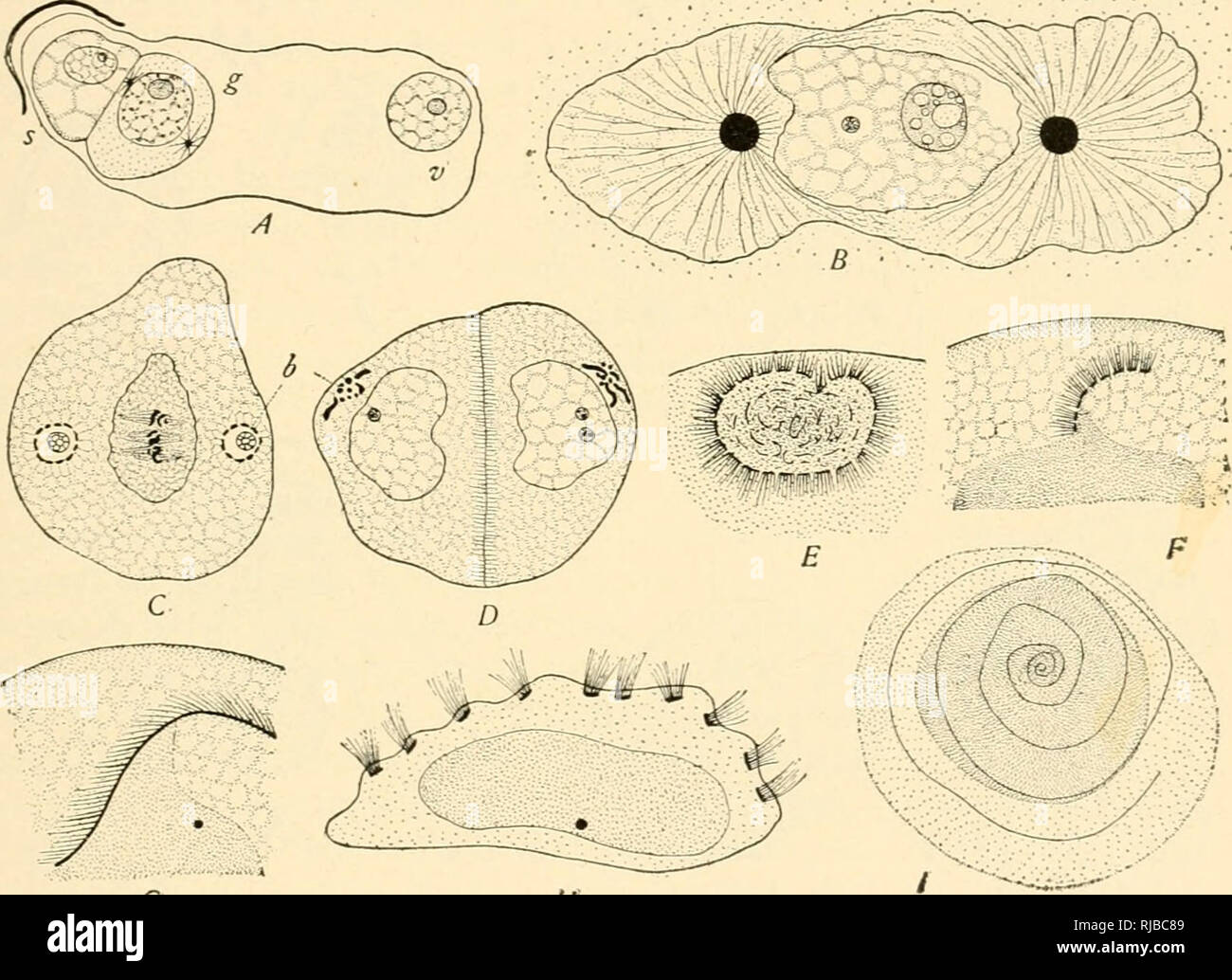. The cell in development and inheritance. Cells. GROWTH AND DIFFERENTIATION OF THE GERM-CELLS 173 This tallies with Strasburger's earlier conclusion that the cilia-bearing region consists of " kinoplasm " and corresponds to the middle-piece ('92, p. 139), but gives a still more definite basis of comparison.^ The history of the centrosome-like hodAes {bh-pharop/asts of Web- ber, '97, 3) has been carefully followed out in Zaniia and Gingko by Webber ('97), and in Cycas by Ikeno ('97, '98) with nearly similar results. In all these forms (Fig. 87) the blepharoplasts appear in the. Q H F

Image details
Contributor:
Library Book Collection / Alamy Stock PhotoImage ID:
RJBC89File size:
7.1 MB (366.2 KB Compressed download)Releases:
Model - no | Property - noDo I need a release?Dimensions:
1854 x 1347 px | 31.4 x 22.8 cm | 12.4 x 9 inches | 150dpiMore information:
This image is a public domain image, which means either that copyright has expired in the image or the copyright holder has waived their copyright. Alamy charges you a fee for access to the high resolution copy of the image.
This image could have imperfections as it’s either historical or reportage.
. The cell in development and inheritance. Cells. GROWTH AND DIFFERENTIATION OF THE GERM-CELLS 173 This tallies with Strasburger's earlier conclusion that the cilia-bearing region consists of " kinoplasm " and corresponds to the middle-piece ('92, p. 139), but gives a still more definite basis of comparison.^ The history of the centrosome-like hodAes {bh-pharop/asts of Web- ber, '97, 3) has been carefully followed out in Zaniia and Gingko by Webber ('97), and in Cycas by Ikeno ('97, '98) with nearly similar results. In all these forms (Fig. 87) the blepharoplasts appear in the. Q H Fig. 87. — Formation of the spermatozoids in the cycads. ^A, Gingko ; B-D. Zamia, Webber; E-I, Cycas. Ikeno.] A. Developing pollen-tube, showing stalk-cell {s), vegetative cell {v) and generative cell {g). the latter with two blepharoplasts. B. Generative cell, somewhat later, with blepharoplasts and asters. C. The same in the prophases of division, showing breaking up of blepharoplasts. D. The two spermatids formed by division of the generative cell; blepharoplasts fragmented; from these fragments arises the cilia-bearing band. E. Blepharoplast of Cycas, at a stage some- what later than Fig. C cilia developing. F. Later stage; ciliated band (derived from the last stage) attached tea prolongation from the nucleus. G. Cilia-bearing band continuous. //. Nearly ripe spermatozoid with nucleus in the centre; ciliated band, shown in section, forming a spiral. /. Slightly later stage, viewed from above, showing the spiral course of the band (cilia omitted). penultimate cell-generation lying one on either side the nucleus, and in earlier stages surrounded by astral radiations very closely resem- bling those of a typical mitotic aster, and they lie opposite the poles 1 The "anterior" region of the spermatozoid thus corresponds to the "posterior" region of the spermatozoon, the confusion of terms having arisen from the fact that the former swims with the cilia-bear